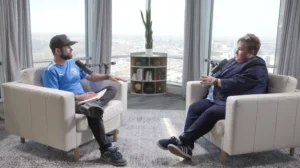A Heart Attack Detection Unit That Can Reduce Unnecessary ER Visits
When the legend becomes fact, print the legend. In the case of Branislav Vajdic, Ph.D., CEO, and Founder of HeartBeam, this legend truly is fact. Vajdic arrived in the US in the late 1970s and got his Ph.D. in electrical engineering. He then worked for Intel, designing the first flash memory and eventually the design manager for Intel’s Pentium chips. I Don’t Care’s Kevin Stevenson spoke with Vajdic about his latest undertaking, HeartBeam, whose mission is to detect heart attacks before they become fatal. So, how does a legendary chip designer become a cardiovascular insider?
“Back in Europe, my father was a well-known physician/surgeon, and one afternoon he did not feel well,” Vajdic explained. “He had this chest pain, discomfort, etc. Despite his medical background, he did what most people do; he disregarded the symptoms. He said, well, it’s going to be okay; it’s nothing serious. Unfortunately, that was a heart attack in process, and we lost him. That stuck with me all these years, and when I left Intel, I decided I’m going to turn my career to solving the problem of heart attack detection.”
In 2015 Vajdic began an in-depth search for a solution that could help a patient distinguish between something as minor as indigestion or a pulled muscle versus the patient having an actual heart attack.
“There was nothing out there that could be with a patient 24/7,” Vajdic said. The solution needed to be effortless for the patient and small enough that they could always carry around with them. “It turned out to be a very difficult technical problem, and I paired with two nuclear physicists. And we started looking at this problem that was deemed to be unsolvable. How do you with a credit card-sized device capture enough information from the heart activity to detect a heart attack?”
But unsolvable problems never stopped Vajdic before, and they were not about to stop him now. HeartBeam’s portable medical-grade heart attack detection device is that solution.
More Like This Story:
From an Idea to Billion Dollar Company: How a Doctor Lobbied DC for HSAs
The Role of Remote Cardiac Monitoring Technology in Saving Lives









